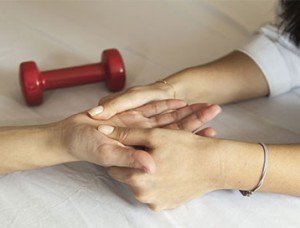|
BOOK NOW |
ASK ABOUT YOUR PAIN |
Home > Blog > Hand Therapy > Golf Wrist Injuries and Hand Physiotherapy
Golf Wrist Injuries and Hand Physiotherapy

Majority of golf injuries are overuse injuries of the wrist
- flexor tendons or
- extensor tendons
The left wrist (in the right-handed golfer) is the most commonly injured. Analysis of golf swing often demonstrates excessive motion of the left wrist (in a right-handed golfer), along with a catapulting function, which leads and causes increased vulnerability of the left wrist to injury.
Excessive dorsiflexion and ulnar deviation of the right wrist may lead to a micro-tear of the triangular fibrocartilage complex (TFCC), a very complex triangle-shaped cross-ligament structure. For mild cases of such tears, patients may just need hand therapy and do not need hand/TFCC surgery but unrepaired or untreated TFCC injuries may cause restriction from golf for an extended period of
time.
golf wrist injuries Causes
Our triangular fibrocartilage complex (TFCC) is located between the ulna and the carpus and it is the major stabilizer of the distal radioulnar joint. Unfortunately, because it's the major stabilizer, most loads go through it, leading it to be a commonly injured area: ulnar wrist pain (it's been termed as "the back pain of the wrist").
Compressive loads on the wrist, especially with a combination of wrist ulnar deviation during a golf swing can cause a tear in the central portion of the TFCC, leading to
- pain
- swelling
- difficulty moving
- feeling unstable
- no strength
golf wrist injury Symptoms
- Tenderness and swelling over the back and front of the ulnar aspect of the wrist
- Pain especially with resisted wrist dorsiflexion and ulnar deviation
- A clicking/triggering sensation on wrist movement
- Reduced grip strength
- Sharp pain experienced in your injured wrist whenever you try to get up from a chair or bed using the affected wrist.
How our senior hand therapists can help

Splinting:
Our senior hand therapist may have to custom-make a splint to either hold lock your elbow into 90 degrees and lock your forearm into supination for approximately 6-12 weeks or at least to protect/lock your wrist from moving, to allow for healing of the cartilage.
Ultrasound Therapy:
The use of electrotherapeutic modalities such as ultrasound therapy are especially required for soft tissue injuries such as muscles, ligaments, tendons and cartilages. Therapeutic ultrasound is a treatment method that uses high-frequency(ultrasound) sound waves to accelerate healing in the injured joint or muscle tissue.
Post-acute/Stable:
Once your golf wrist injury and wrist is stable, our senior hand therapists will then start to work on:
- restoring your wrist range of motion (movement)
- restoring and improving your finger, hand and wrist strength and stamina
general advice
- Always get a golf trainer, or someone who has been golfing for some time to guide your golf swings
- Take rests and micro-breaks often to drink water, stretch, walk
- Use light grip pressure. Slow your backswing and decrease excess wrist motion
- Avoid steep downswings that could cause striking the ground
- Use golf clubs designed to absorb vibration